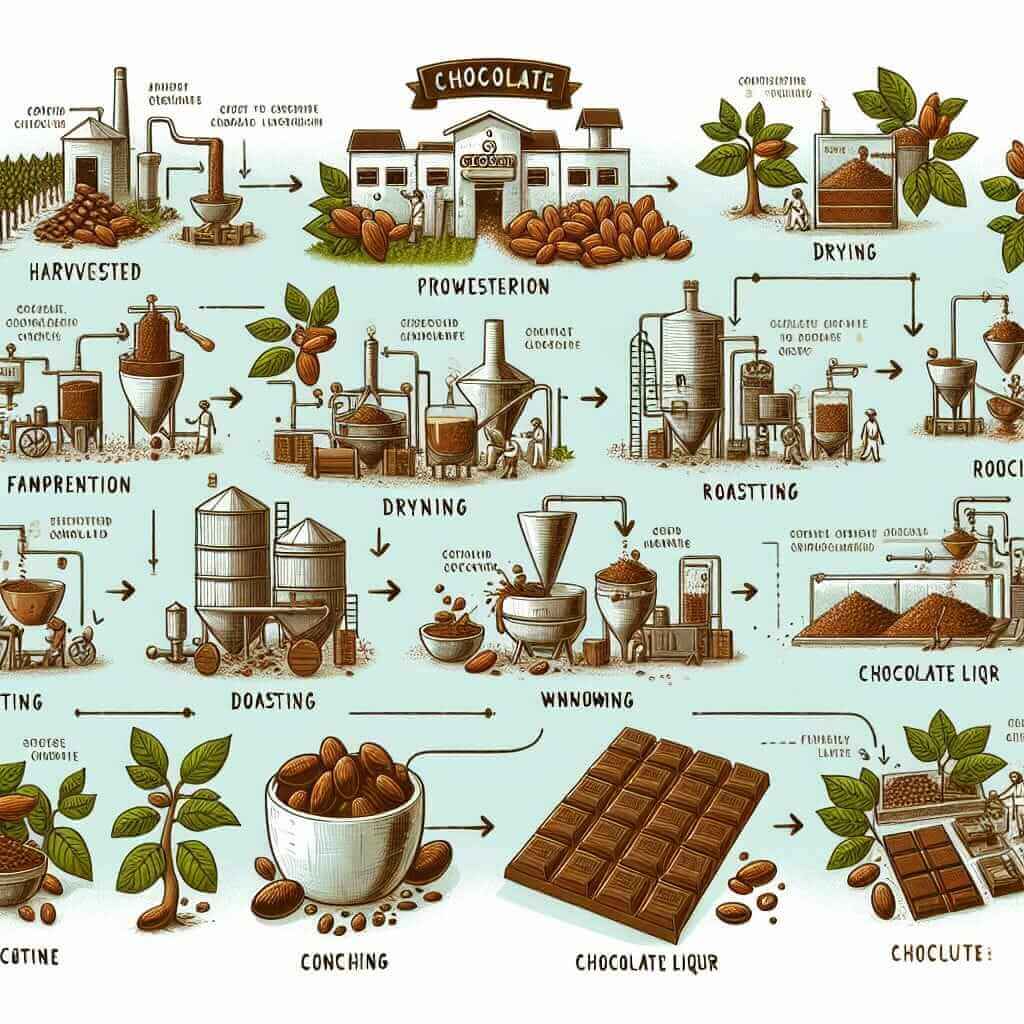As an IELTS instructor with over two decades of experience, I’ve encountered countless topics in the IELTS Speaking test. One that often arises, particularly in Part 2, is the process of making chocolate. While seemingly straightforward, this topic can trip up candidates who aren’t prepared with the right vocabulary and structure. This article delves into how to confidently and effectively describe “how to produce chocolate” for IELTS, equipping you with the tools to impress your examiner.
Why is Describing a Process Important in IELTS?
The ability to clearly and accurately describe a process demonstrates a strong command of the English language. It showcases your:
- Sequential Language: Using words like “firstly,” “subsequently,” “following this,” and “finally” highlights your ability to logically organize information.
- Vocabulary Range: Describing production requires specific terms (e.g., “fermentation,” “roasting,” “conching”) that showcase your vocabulary breadth.
- Grammar Control: Using the passive voice (e.g., “The beans are harvested…”) accurately is essential when explaining processes.
Breaking Down Chocolate Production for IELTS
Let’s outline the key stages involved in producing chocolate:
1. Harvesting & Fermentation:
- Begin by explaining that cacao beans, the raw material for chocolate, are found inside pods grown on cacao trees.
- Describe the harvesting process, where ripe pods are cut from the trees and split open to extract the beans.
- Emphasize the importance of fermentation, where the beans are covered and left to ferment, developing their flavor.
2. Drying & Roasting:
- Explain how the fermented beans are then spread out to dry, often under the sun.
- Next, describe the roasting process, where the beans are heated to enhance their flavor and aroma.
3. Grinding & Conching:
- Describe how the roasted beans are ground into a thick paste called chocolate liquor.
- Explain the conching process, where the liquor is further refined through prolonged mixing and heating, resulting in smoother, more flavorful chocolate.
4. Tempering & Molding:
- Describe tempering, a crucial step involving precise heating and cooling of the chocolate to achieve the desired texture and shine.
- Finally, explain how the tempered chocolate is poured into molds, cooled, and then packaged for consumption.

Illustrative Example from IELTS Speaking Part 2
Let’s imagine you receive this cue card:
Describe a time you learned how something was made.
- What was it?
- Where did you learn about it?
- What were the steps involved?
- And explain how you felt about learning this.
This is an ideal opportunity to discuss chocolate production! You can describe visiting a chocolate factory or watching a documentary, then detail the steps mentioned above.
Tips for Success:
- Visualize: Close your eyes and imagine each stage of the process. This will help you recall vocabulary and structure your response.
- Practice Makes Perfect: Rehearse describing the process aloud. This helps build fluency and confidence.
- Don’t Overcomplicate: Focus on the key stages. You don’t need to provide a highly technical explanation.
- Use Linking Words: Connect your ideas smoothly with words like “then,” “afterwards,” “once,” etc.
- Be Enthusiastic: Show genuine interest in the topic. Your enthusiasm will engage the examiner.
Remember, success in IELTS Speaking relies on clear communication, accurate language, and organized delivery. By understanding and practicing how to describe “how to produce chocolate,” you’ll be well-prepared to tackle this topic and demonstrate your English proficiency.